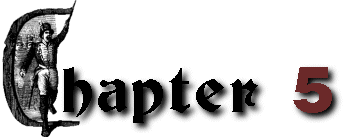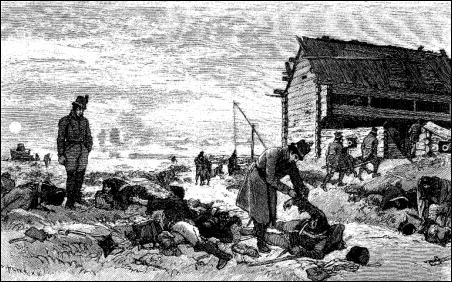
Peace agreement and the results of the war

The final peace agreement between Russia and Sweden was signed in Fredrikshamn on september 17, 1809. Russia annexed Finland and the Åland islands; the Finnish union with Sweden had come to an end.
While the war of 1808-09 is not to be considered being of world historical proportions, it certainly was an important event in both Sweden's and Finland's history, and especially the result of the war was of importance for the Finnish nation. It was during the Russian period from 1809 to 1917, the Finnish national character was formed, and out of it grew Finland as an independent nation. Finland was treated well by the Russian authorities and achieved a situation of autonomy within the Russian empire, and the frames for this autonomy were decided upon at the lantdag of Borgå in 1809 where Czar Alexander took part personally. The Czar wanted to secure Finnish goodwill as he saw the powerstruggle with Napoleon drawing closer. The situation of autonomy was thereupon fully maintained until the end of the nineteenth century when an age of aggressive russification followed. Sweden and Finland separated and a 600-years old union went into the grave; Sweden pointed west, Finland pointed east. The divorce was a fact and especially after Jean Baptiste Bernadotte was chosen crown prince of Sweden, all Swedish plans of reconquest faded. In Napoleonic perspective, the war of 1808-09 was only a small part of the world war of its time, and as always, Sweden and Finland had only been pieces in the political chessgame between the greater continental powers.
Sweden had excellent chances of fighting a good defensive war. The terrain of Finland spoke in favour of defence and the larger fortifications in southern Finland were backbones in a strong system of defence. However, the chances were spilt out in the sand. Why did the Swedish warfare fail? Let us take a look at some of the different reasons. The war of 1808-09 was badly run by the Swedish military high command right from the start. The king had been a bad leader of the nation during this war and his differences with the generals did not make the situation any lighter for the men fighting in the field. The instability of the king came to the surface time after time; one day he appeared in the boots of the warrior king Karl XII. The commanders leading the army, although names like Georg Carl von Döbeln, Sandels and Adlercreutz can be found here, had been held back by the weak and incompetent fieldmarshal Klingspor, who during the war always favoured retreat insted of attack in force. Misfortune (Sveaborgs surrender) as well as inadequate equipment and bad preparations made the Swedish wareffort look almost pathetic. The war could only be prolonged as the morale of the men never failed and the commanders in the field time upon time did great deeds of almost inhuman bravery and excellence. Against all this stood the Russian army; with its overwhelming number of experienced troops and excellent generals and commanders and due to the unplanned nature of the Swedish warfare, unthreatened supplyroutes.
Military coup in Stockholm
Time was running out for the charicature king Gustav IV Adolf. The defeat in the war was largely blamed on him and his inefficient command in the war. In the midst of the war, in march 1809 things started to happen.
The generals were very displeased with how the sick king Gustav IV Adolf had run the war and the Western army, under Adlersparre, was on its march to Stockholm from the vicinities of the Norwegian border, and he openly proclaimed that he was going to throw over the king. Civil war threatened in Sweden. Adlersparre came from a lower nobility family of officers and during his life he had been deeply fascinated by the French philosophers as well as the revolutionary ideals. In 1809-10 he made a short appearance in Swedish politics. His talent and ability to take action were overshadowed by his lack of perseverance and he did not have the energy to realize his plans. On March 7, 1809 his army marched into Karlstad and proclaimed that the city was under occupation. A few days later Adlersparre and his army of less than 2.000 soldiers turned to march upon Stockholm.
At this time a military "Junta", led by Adlercreutz took its chance. "Then Adlercreutz seized the opportunity, as the political tension had kept him in Stockholm. For the second time in his life he heightened himself to decisive and great action. This time it was just as needed as tragic. He had earlier refused to stand in the front of the conspiracy [against the king], but now the further existense of the kingdom was at stake", Eirik Hornborg tells us in his book "När riket sprängdes". And certainly. The Coup d'Etat was just as tragic as it was humourous. On march 13, 1809 - in the midst of war against Russia - the officers-junta approached the king in his palace and told him that he was under arrest. In a never before seen display of bravery, the weak king reached for a sword and escaped out through a secret passage in the castle, screaming "treason!". The king knew the castle like the back of his hand and escaped unseen out in the yard, where he tried to stick his sword in one of the conspirators as he was finally detected. And the king received help from a woodcutter who aggressively swung a piece of wood against one of the coupists. Finally, after all this fighting, the king was arrested and the junta seized the control of Sweden.
Jean Baptiste Bernadotte
Jean Baptiste Bernadotte was born on January 26, 1763 in Pau in southern France. His father was a lawyer and it was initally meant that the young Jean Baptiste should follow in his fathers steps and becoma a lawyer himself. At the age of seventeen he joined the army though, at the Royal Marine, and ten years later he had advanced to the highest rank for under officers in the French army. The revolution gave him new prospects and at the age of 31 he was made brigadier general. He was later made one of the first marshals of the empire in 1804 as emperor Napoleon appointed these. The rivalry between Napoleon and Bernadotte never ended though as the emperor had once been engaged to Bernadotte's wife, Desirée and since then the rivalry continued on. Bernadotte worked as French ambassador in Vienna for some time (1798) and was later given the little kingdom of Pontecorvo in Italy by the emperor. Barnadotte took part in the battles of Austerlitz and Jena-Auerstädt, and in 1806 he beat the Prussians at Halle and Landsberg, and thereupon received Blüchers and Braunschweigs surrender at Lübeck. He defeated the Russians in the battle of Mohrungen in 1807 and in 1808 he was made governor of the Hanseatic cities, commanding the armies in Denmark in 1807-08, planning an invasion of Sweden. In August of 1810 he was chosen crown prince of Sweden by the Swedish parliament, Riksdagen. He gratefully accepted this mission, although he never learned to speak Swedish correctly.
When Crownprince Karl fell off a horse and died during a military review at Kvidinge Hed in Scania on May 28 1810, he really died of a stroke. But bad rumours soon flew around the kingdom, it was said that he had been murdered. And during the burial of Karl, the scapegoat, the noble Axel von Fersen was murdered by raging masses. Axel von Fersen had been a true adventurer and had even tried to save the royal family of France during the revolution (the escape to Varennes was his work). Bernadotte arrived in Sweden on October 20, but was crowned king of Sweden many years later, in 1818.
With the choice of Bernadotte as crown prince of Sweden a new era in Swedish history began. The plans of reconquering Finland faded and instead Bernadotte pointed his interest at Denmark. In short, Swedish armies fought alongside the allies in Germany during the 1813-14 campaign. Bernadotte thus betrayed the country in which he had been born, as he pointed his guns at the French army, personally leading the Northern Army of the united allied forces. These actions have been badly critizised in European history. He defeated marshal Oudinot at Grossbeeren, marshal Ney at Dennewitz and took part in the battle of the nations (Volkerschlacht) at Leipzig, where the French emperor was finally defeated in Germany. Instead of continuing his march against Napoleon, Bernadotte turned his armies upon Denmark. At the peace agreement of Kiel in 1814, Sweden annexed Norway from the age-old enemy of Denmark, which had been Napoleons greatest ally. In this final peace agreement Sweden left Pomerania to the Danish. And so, Bernadotte had reshaped the map of Scandinavia. Norway was incorporated into union with Sweden, but as this new union had no historical foundation, Norway experienced the same national rebirth as Finland did under Russian rule. The Norwegian-Swedish union was finally dissoved under peaceful forms in 1905, Finland's break-up with the Russian empire was to be a somewhat bloodier affair in 1917-18. Jean Baptiste Bernadotte's relatives still sit on the Swedish throne today and they represent the last Napoleonic throne in Europe. Bernadotte died in Stockholm on March 8, 1844. And say what you want about this controversial character, but Bernadotte guided his little northern kingdom onto a new, peaceful path. The peace that Sweden established in 1814 has survived into our time.
Previous chapter
Back to The Final War Chapters
© Göran Frilund 2000-03, All Rights Reserved.
If you've surfed onto this page from outside and there is no menu on the left,
CLICK HERE for the full Website.


